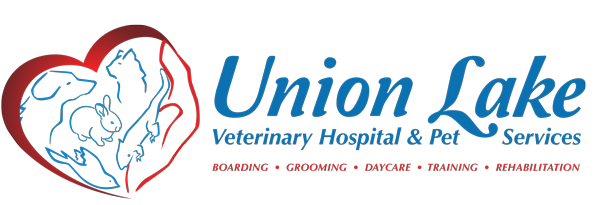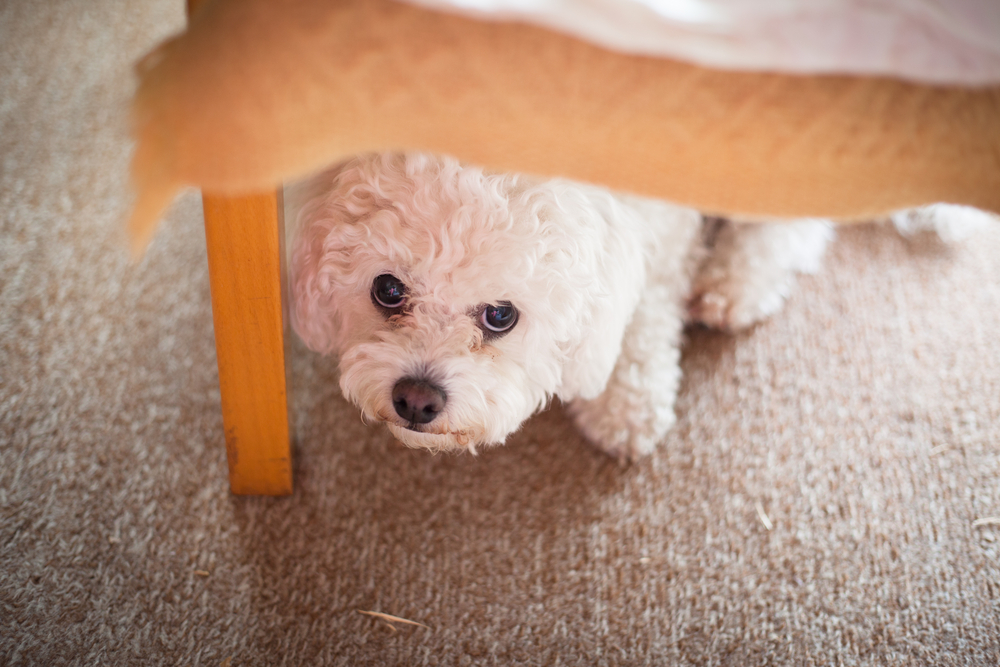If you recently adopted a dog, we commend you! There is nothing better than adding a furry loved one to the family. A rescue dog, though, come with his own difficult background, and sometimes these backgrounds make for a fearful or shy pup.
Because of unknown training and socialization, you can understand the challenge of bonding with your pet. He may be reactive, easily startled, or shy, especially if he has been waiting at a shelter. He may want to warm up, but not just yet.
What do you do with a fearful rescue dog? Never fear! Your friends at Union Lake Veterinary Hospital and Pet Services can show you how to strengthen the bond by offering tips for overcoming those fears. Let’s begin!
Why Is a Rescue Dog Fearful?
Most animals who enter a shelter environment end up there for a few reasons, and the biggest one is that they need socialization. Socialization should occur in a dog during their puppy years, when they learn good skills like housetraining, responding to commands, and trusting the people who care for them. Sometimes, and it is hard to think about, your pet could have been abused, mistreated, neglected or just ignored by a previous owner.
Given our pets’ varied backgrounds, it is understandable why some come to us fearful, shy, or aggressive. The positive thing is that we can now focus on helping a fearful pet learn to trust again. There is hope in this, and most pets do come around with patience, training, and plenty of love.
Reducing the Fear, Creating a Stronger Bond
A happy-go-lucky dog is a confident dog, and your pet can soon become this. It will take time. It’s vital to understand what your dog is afraid of – is it people, other dogs or animals, strangers, or is he generally anxious? This can help you avoid situations that bring out fear response and introduce them gradually as your pet becomes more at ease.
Here are 5 tips to help your rescue dog develop confidence and learn the right behaviors for everyone’s wellbeing.
- Focus on safety – Don’t rush into a crowded park with your pup, if you are unsure of your dog’s response. Your enthusiasm may not be felt by your dog. Give your pet an environment that is safe, protected, and has minimal distractions while you two are in training. Honor your pet’s feelings by steering clear of anything that can incite more fear.
- Give him things to do – What is it your dog likes most? Is it playing fetch? Going to a favorite park? Getting a tasty treat? Give him lighthearted distractions as you acclimate him to new experiences.
- Introduce new people and animals slowly – Whatever the scary thing is for your pet, make sure to introduce these slowly. If it is strangers, ask a trusted friend to come over to the house. Keep your pet near you and let him sniff. If he backs away, let him feel safe again in another room. Slow introductions can be helpful, as each time your pet becomes a little less reactive, you can reward him with treats and praise.
- Provide professional training – Once you’ve spent time with your dog, an essential part of socialization is training. Positive reinforcement training in a group is a wonderful way to be around other pets in a safe space. A professional trainer can guide your pet using structured training designed for pets who have little or no training. Learning commands and cues is a great way to strengthen your bond while learning skills for a lifetime.
- Give your pet his own “den” – Many pets respond to crate training when building confidence. Let your pet investigate his crate. Add favorite blankets and treats to entice him. You may wish to feed him in or near the crate as a way to create positive associations with it. Never use the crate as a punishment and limit time in the crate to less than 2-3 hours during the day.
The best way to help your rescue dog is to give him plenty of time and attention. Do fun things together, like walking, hiking, running, or other forms of exercise and enrichment. The time you spend together will go a long way in bringing down those initial walls.
Does Your Rescue Dog Need a Little Help?
If your pet still isn’t coming around or the fear has increased, please contact us for a behavioral consultation with a veterinarian. Or consider group or one-on-one training for fearful or reactive dogs with a trainer experienced in working with them. Our training department offers a list of classes and training opportunities for anxious or reactive dogs. We offer Quirky K-9 classes, drop-off behavior modification or socialization for fearful dogs, and in-home training. With a little support, you and your precious pup will be on your way to better bonding.

